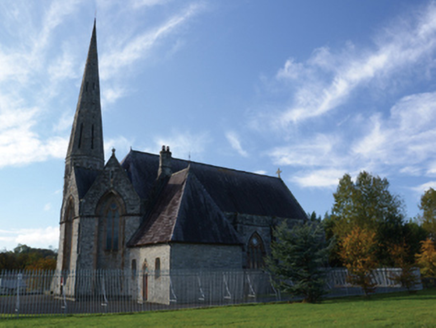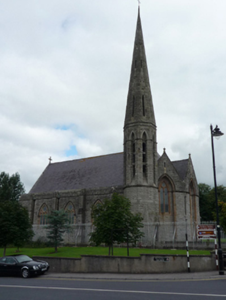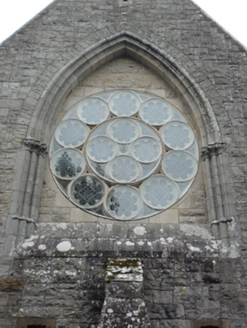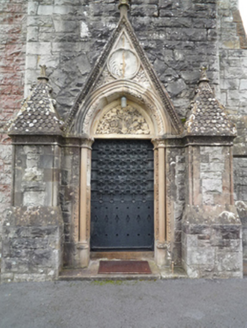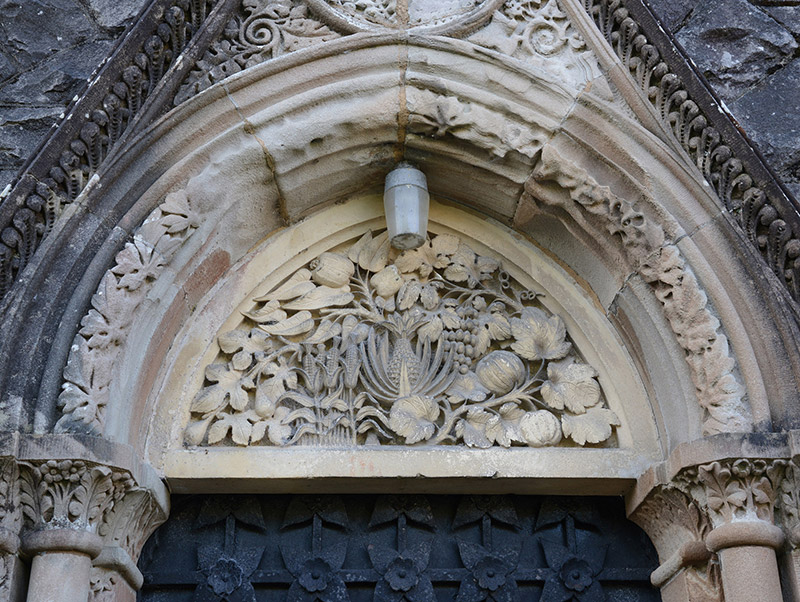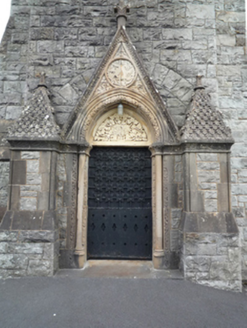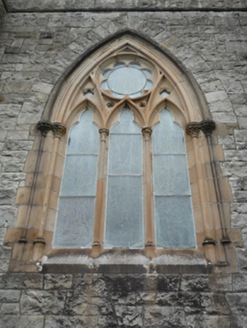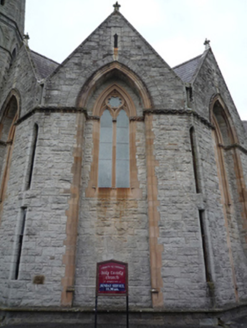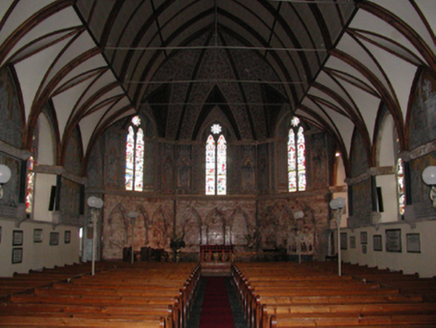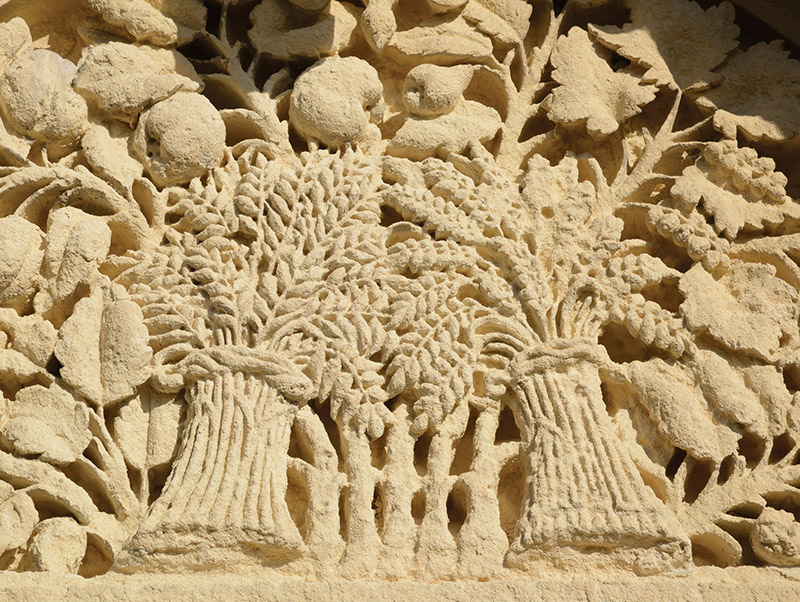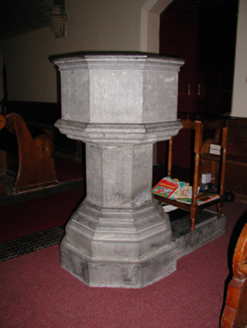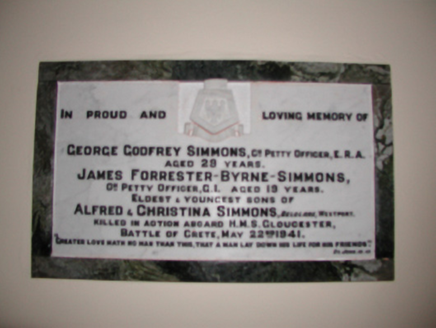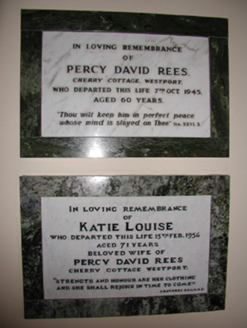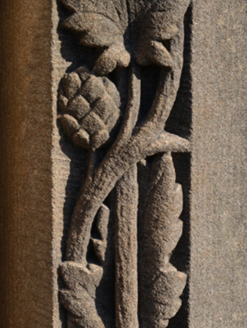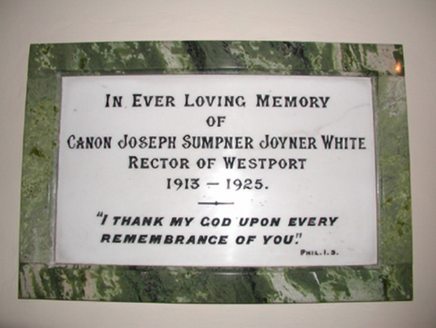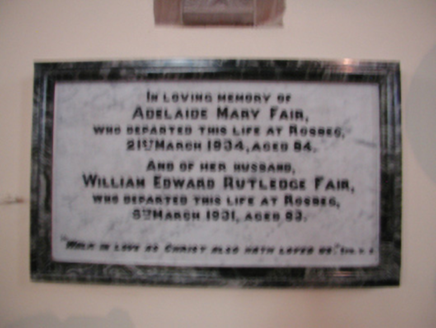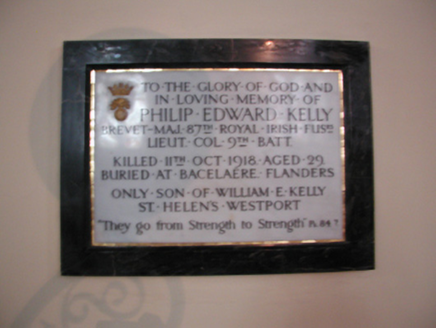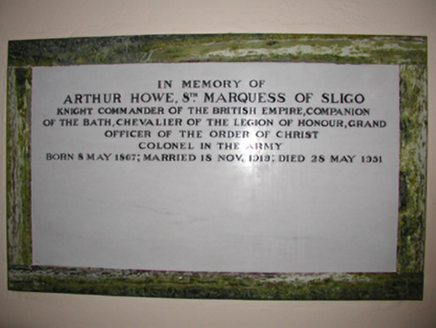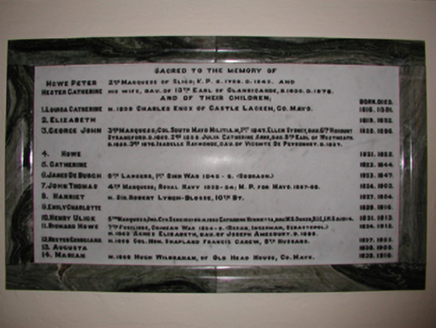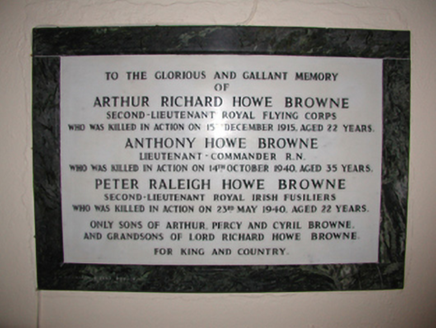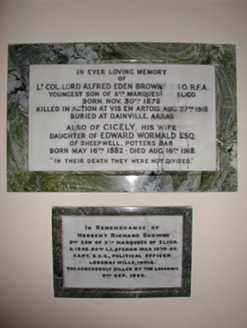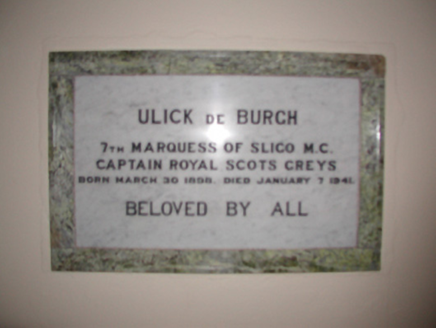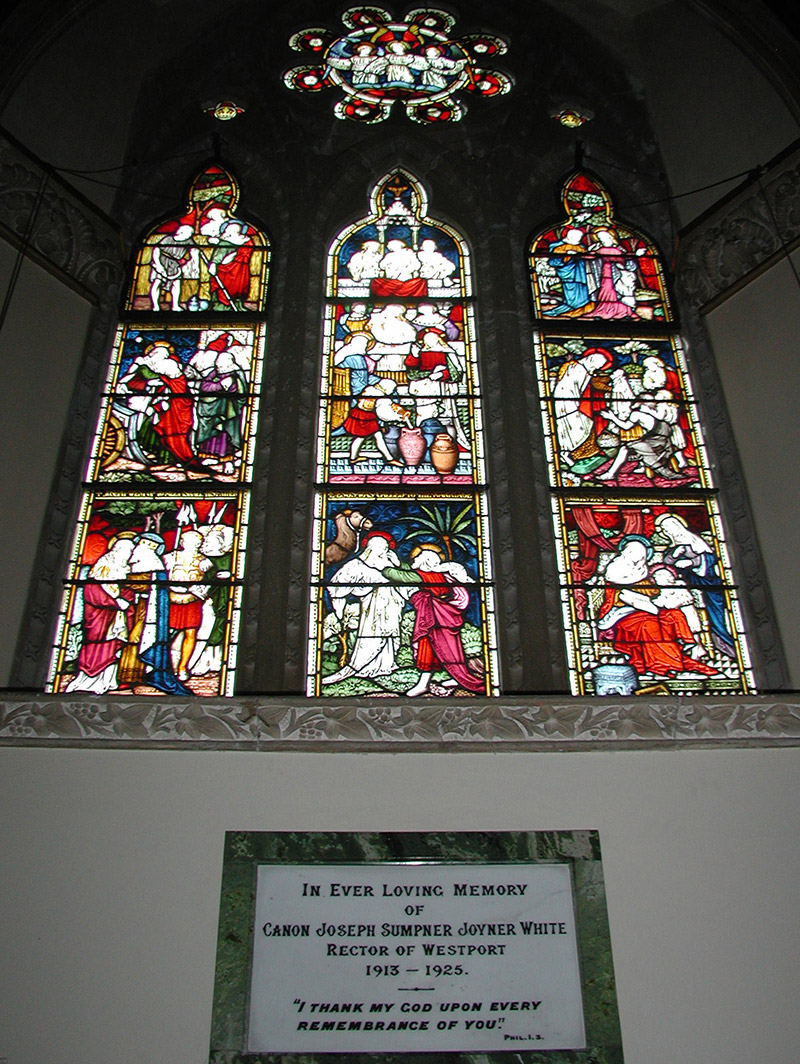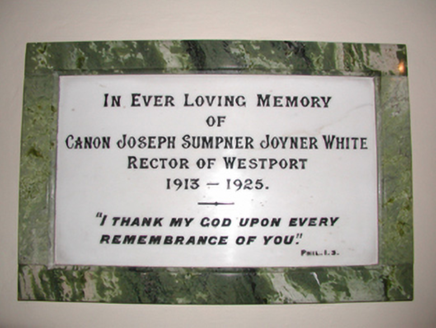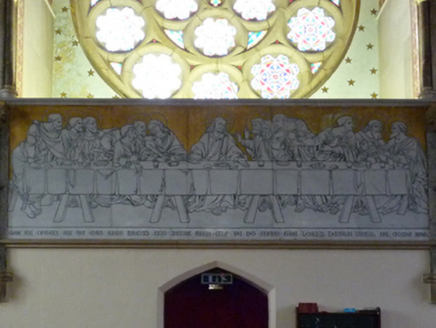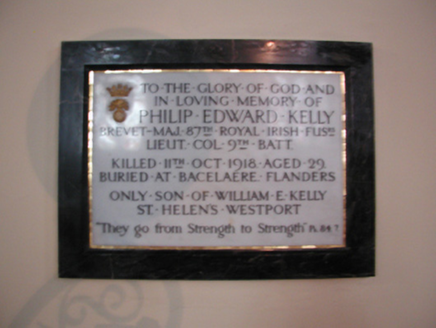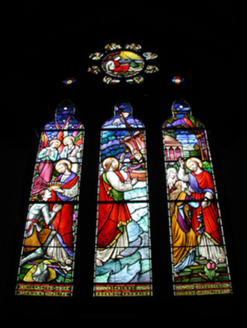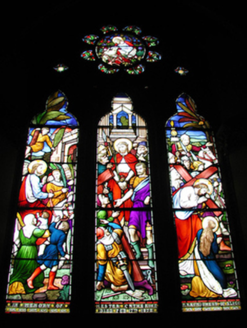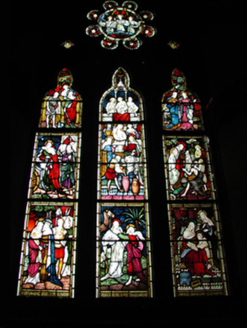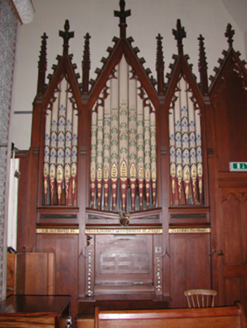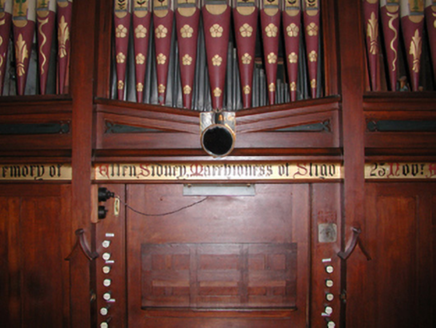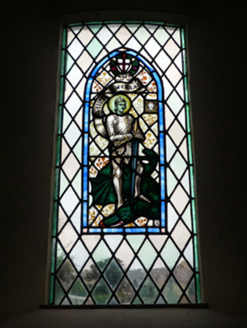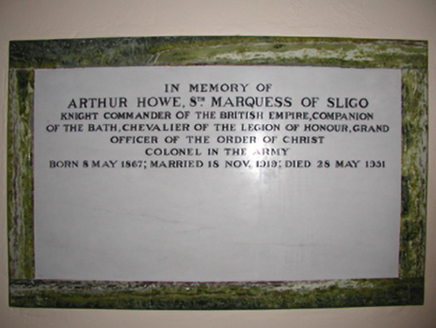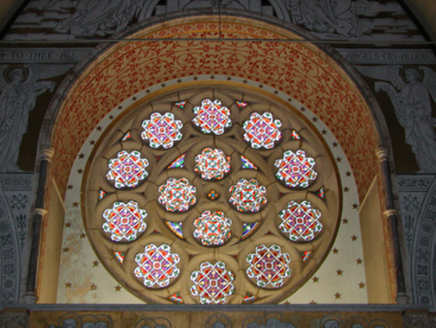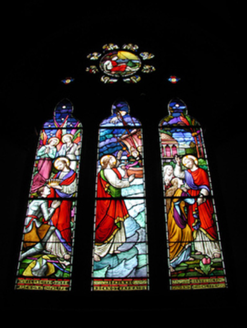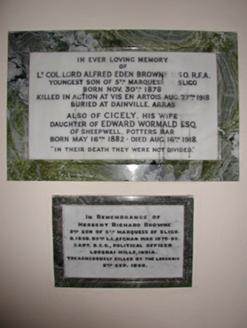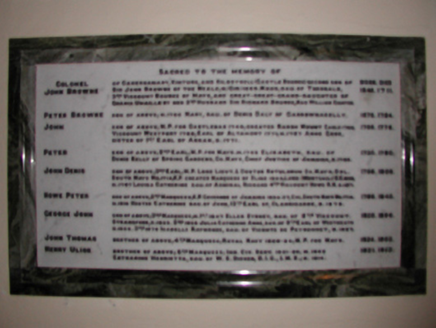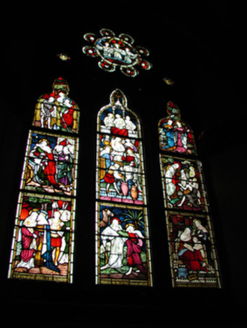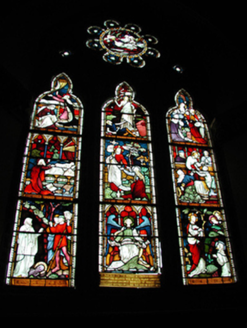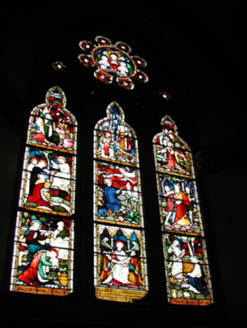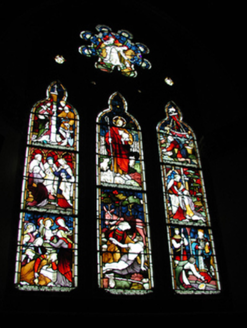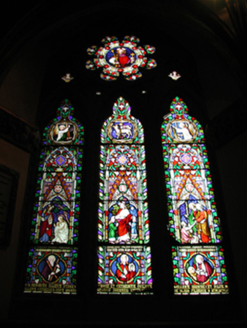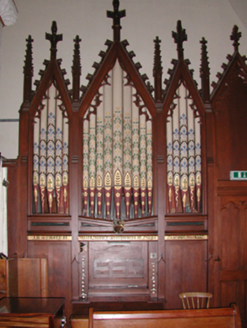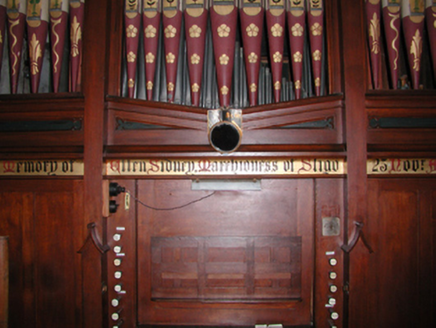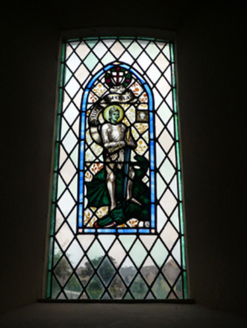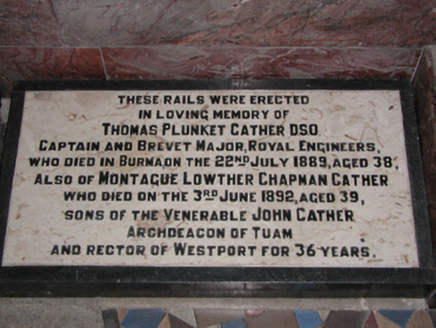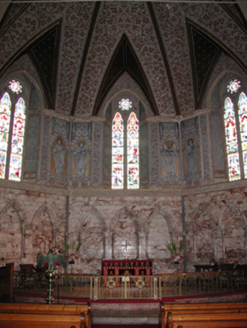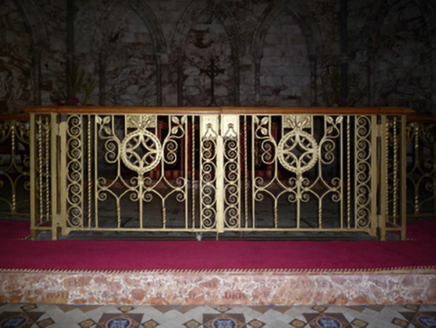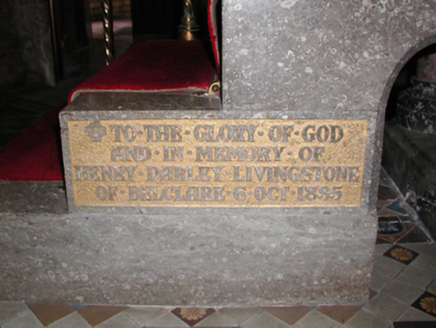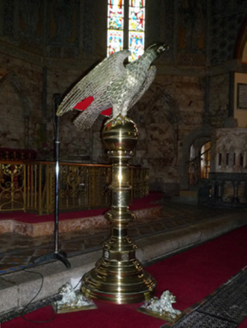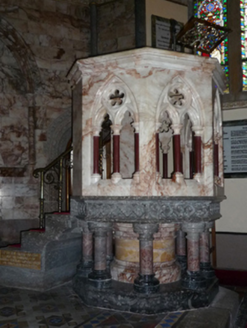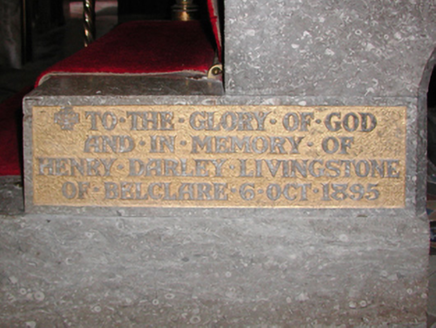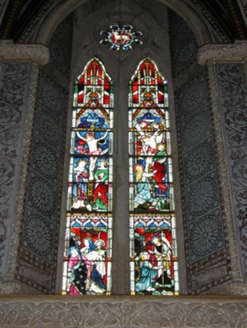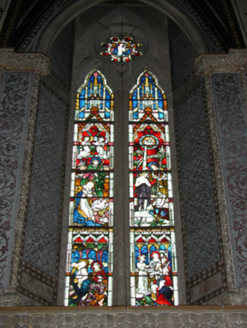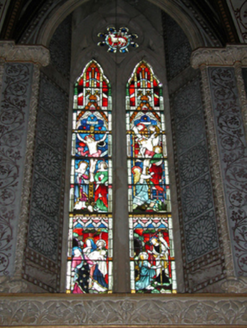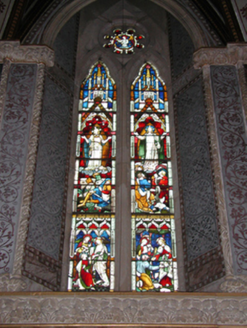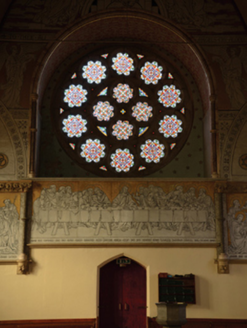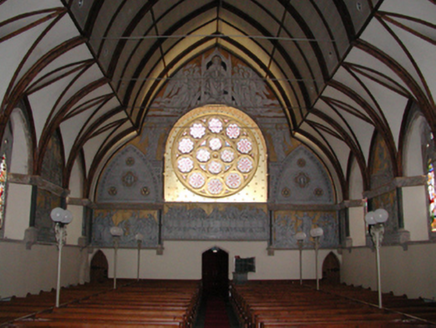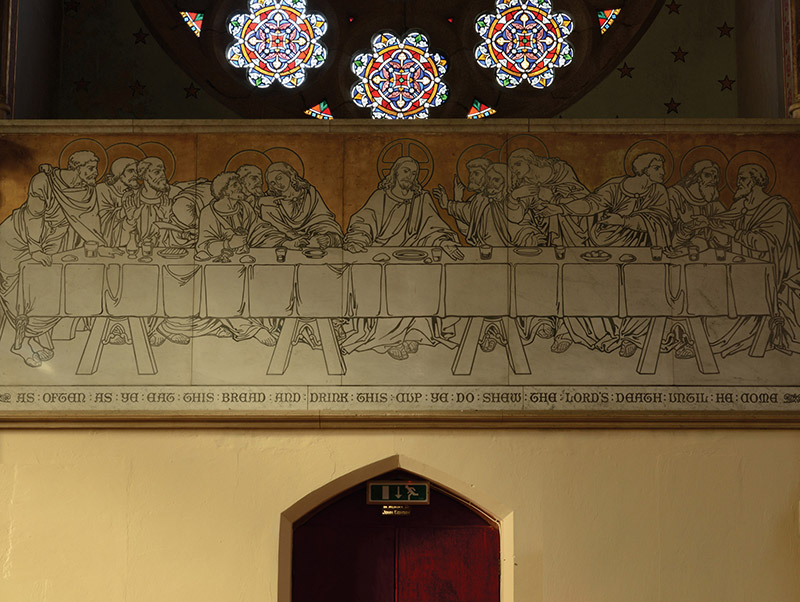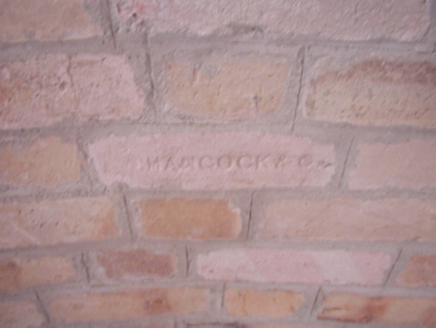Survey Data
Reg No
31212019
Rating
National
Categories of Special Interest
Architectural, Artistic, Historical, Social, Technical
Original Use
Church/chapel
In Use As
Church/chapel
Date
1865 - 1875
Coordinates
99782, 284671
Date Recorded
15/08/2008
Date Updated
--/--/--
Description
Detached five-bay double-height Ecclesiastical Commissioners' Church of Ireland church, designed 1869; built 1869-71; consecrated 1872; extant 1897, comprising four-bay double-height nave opening into single-bay full-height apse (east) on an engaged half-octagonal plan with single-bay two-stage turret (south-east) on a square plan supporting octagonal "pencil spire". Restored, 1984-6. Interior including vestibule (west); pointed segmental-headed door opening into nave with timber double doors having overpanel; full-height interior with drag edged dragged cut-limestone baptismal font (west) on an octagonal plan below stained glass "Rose Window" (1872), carpeted central aisle between timber pews, cut-white marble wall monuments (ob. 1711-1951), stained glass memorial windows (1872-80; ob. 1850-78) between gold leaf-detailed inlaid murals (1878), sheeted Hammerbeam timber roof construction in carved timber frame on polished Kilkenny marble Corinthian colonettes, polished brass memorial Eagle lectern (ob. 1894) with cut-veined white marble Gothic-style memorial pulpit (ob. 1895) on an octagonal plan, and mosaic tiled cut-veined pink marble stepped dais to apse (east) supporting barley twist-detailed polished brass memorial communion railing (ob. 1889) centred on red velvet-covered altar below stained glass windows (1874) in mosaic tiled frames (1877). Set in landscaped grounds with spear head-detailed cast-iron railings to perimeter.
Appraisal
A church erected to a design (1869) by Sir Thomas Newenham Deane (1827-99) of Cork and Dublin (Irish Builder 1872, 1273) widely regarded as a particularly important component of the nineteenth-century ecclesiastical heritage of County Mayo with the architectural value of the composition, one succeeding an eighteenth-century parish church in the grounds of Westport House (see 31212006), confirmed by such attributes as the compact rectilinear plan form opening into a polygonal apse; the rock faced surface finish offset by 'Scotch stone' dressings not only demonstrating good quality workmanship on the part of a 'Mr. William Ridge' (Mayo Examiner 30th September 1872), but also producing a mild polychromatic palette; the "pointed" profile of the openings underpinning a "medieval" Gothic theme with the polygonal apse further defined by 'southern [sic] gables…a feature very often found in continental Churches' (Ballinrobe Chronicle 5th October 1872); and the slender "pencil spire" embellishing the roofline as a picturesque eye-catcher in the landscape. Having been well maintained, the elementary form and massing survive intact together with substantial quantities of the original fabric, both to the exterior and to the vaulted interior where a "Rose Window" 'provided by the ladies of [the] parish'; restrained wall monument commemorating generations of the Brownes of Westport House; inlaid murals supplied by Samuel Poole of M.T. Bayne and Company of Westminster including a copy of "The Last Supper" (1495-8) by Leonardo Da Vinci (1752-1519); vibrant stained glass by Alexander Gibbs and Company (established 1857) of London; and mosaic work framing stained glass supplied by Clayton and Bell (formed 1857) of London, all highlight the outstanding artistic potential of a church making an imposing visual statement in Newport Street.
